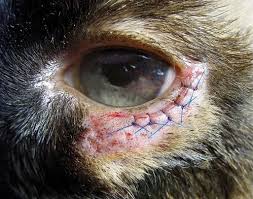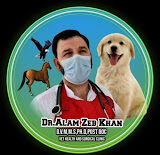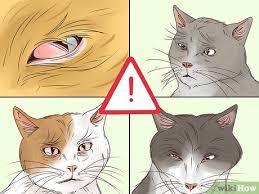Ectropion, though more commonly associated with dogs, is a condition that can also affect our feline companions. As a cat owner or veterinary professional, it’s essential to recognize the signs of ectropion, understand its causes, and be aware of the best treatment options. This article offers a comprehensive look into ectropion in cats — written from a veterinary perspective — to help you make informed decisions for feline ocular health.
What is Ectropion?
Ectropion is a medical condition where the lower eyelid turns outward or droops away from the surface of the eye. This malposition leaves the inner eyelid (conjunctiva) exposed to air and environmental irritants. Over time, this exposure can lead to dryness, irritation, and increased risk of infection or corneal damage.
Causes of Ectropion in Cats
Ectropion in cats may occur due to several underlying reasons:
-
Congenital (genetic): Some breeds, particularly Persians and Himalayans, are born with loose eyelids and facial conformations that predispose them to ectropion.
-
Acquired causes: Injury, inflammation, nerve paralysis (especially facial nerve), or scar tissue from previous trauma can lead to acquired ectropion.
-
Age-related degeneration: Older cats may experience loss of skin tone or muscle support around the eyes.
-
Chronic conditions: Long-standing conjunctivitis, allergies, or infections may contribute to structural eyelid changes.
Clinical Signs and Symptoms
Cats affected by ectropion typically show signs of ocular discomfort and irritation. Common symptoms include:
-
Excessive tearing (epiphora)
-
Visible sagging of the lower eyelid
-
Pink, exposed conjunctiva
-
Mucous or watery eye discharge
-
Squinting or pawing at the eyes
-
Recurrent eye infections or conjunctivitis
These signs often prompt cat owners to seek veterinary attention.
Diagnosis
Diagnosis of ectropion is usually made through a physical and ophthalmic examination. A veterinarian will observe the eyelid conformation, check for corneal ulcers using fluorescein staining, and assess tear production and reflexes. In some cases, underlying causes such as nerve damage may require further diagnostic imaging or neurological exams.
Treatment Options
Treatment depends on the severity and underlying cause of the ectropion:
-
Medical Management: Mild cases may be managed with lubricating eye drops, antibiotic ointments, or anti-inflammatory medication to soothe the exposed tissue.
-
Surgical Correction: In moderate to severe or non-responsive cases, blepharoplasty (eyelid surgery) is performed to correct the eyelid structure. The surgical goal is to tighten or reposition the lower lid to restore proper function and protect the eye surface.

-
Addressing Underlying Issues: If ectropion is secondary to trauma, infection, or nerve dysfunction, the root cause must be treated to prevent recurrence.
- For more details Click Here.
Prognosis and Aftercare
With prompt diagnosis and appropriate intervention, the prognosis for cats with ectropion is generally good. Post-surgical recovery is usually straightforward, although follow-up visits may be needed to ensure healing and prevent complications. Cats with chronic or untreated ectropion may suffer from corneal ulcers, scarring, or vision loss.
Prevention
While congenital ectropion cannot always be prevented, responsible breeding practices, early diagnosis, and routine veterinary care can minimize its impact. Monitoring high-risk breeds and aging cats for early signs of eyelid dysfunction can also help in preventing secondary complications.
Frequently Asked Questions (FAQs)
- What breeds of cats are more likely to have ectropion?
Persian and Himalayan cats are more prone due to their flat faces and loose eyelid structure. However, any breed can develop ectropion due to trauma or age-related changes.
- Is ectropion painful for cats?
Ectropion itself may not cause pain, but it often leads to secondary conditions like dryness, inflammation, and infection, which can be uncomfortable and even painful.
- Can ectropion resolve on its own?
Mild, transient ectropion due to temporary swelling may improve on its own. However, congenital or structural ectropion usually requires medical or surgical intervention.
- How do I know if my cat needs surgery?
Surgery is generally recommended when:
-
The ectropion is causing recurrent infections
-
The cornea is exposed or ulcerated
-
Medical management does not alleviate symptoms
Your veterinarian will assess the severity and discuss whether surgery is appropriate.
- Is surgery for ectropion safe in cats?
Yes. Blepharoplasty is a routine and generally safe procedure when performed by a skilled veterinary surgeon. Post-operative care includes pain management, antibiotics, and possibly the use of an Elizabethan collar to prevent self-trauma.
- Can ectropion come back after treatment?
Recurrence is rare if the surgery is successful and underlying causes are addressed. However, follow-up and monitoring are important, especially in older cats or those with ongoing health issues.
Conclusion
Ectropion in cats, though uncommon, can significantly impact ocular health and comfort. Early recognition, diagnosis, and appropriate treatment — whether medical or surgical — can ensure a positive outcome. If your cat shows signs of eyelid drooping, excessive tearing, or eye irritation, consult your veterinarian for a proper evaluation.
At Dr. Alamzeb Veterinary Clinic, we’re committed to helping you protect your cat’s vision and quality of life. Contact us today to book an appointment or ask for expert advice.


